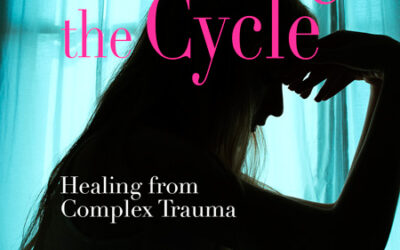If you are a trauma survivor, you probably carry around painful memories.
Sometimes these memories can be truly disruptive to your psyche, and the result is an inability to manage crucial relationships or react in a normative way to the behavior of others. This can negatively impact your love life, your parenting, and even your job. Literally everything you are is affected.
If you’ve read my previous posts, you know I experienced sexual and domestic violence multiple times throughout my younger years. These physical attacks caused severe episodes of depression and anxiety. They also resulted in PTSD. I was a mess to be around. In fact, I’d say on the dysfunction scale of 1–10, I was a 12. (Okay I exaggerate… but wait until my book comes out — you’ll see.)
Just as military personnel can suffer from PTSD after experiencing the violent traumas of war, and children feel it due to family neglect and abuse, I had a long period of time–five to 10 years–when I had flashbacks and nightmares, and I would have strong negative reactions to loud noises or touch. I was a textbook case. (Source Psychiatry.org)
During my early 30s, and after divorcing my first husband, I sought therapy to help with the depression and anxiety I was struggling with. My therapist–I’m calling her Dr. Hermione Aristotle at her request–soon diagnosed me with PTSD.
Dr. Aristotle was (is) an expert in treating clients who have survived trauma, and at the time, had recently trained in providing Eye Movement Desensitization and Reprocessing (EMDR) therapy. She asked me if I’d be open to trying the therapy, and I said “yes” because I desperately wanted to heal.
The American Psychological Association describes EMDR as “a structured therapy that encourages the patient to briefly focus on the trauma memory while simultaneously experiencing bilateral stimulation (typically eye movements), which is associated with a reduction in the vividness and emotion associated with the trauma memories.”
That’s a lot of big words, and you can learn more about the specific steps of this type of treatment through the EMDR link above.
But to summarize, the therapist has you focus your eyes on an object (or a finger pointed in the air) as they move it from side-to-side while asking you questions about the violent experience that you are troubled with. As you share your memory with the therapist while moving your eyes back and forth, you are reprocessing your feelings about the episode, and subsequently becoming desensitized to it.
You don’t forget it happened or anything like that. (It isn’t hypnosis!) You simply release much of the stress your body holds and work through your feelings. Then your therapist will ask you questions to assess how different you feel about that experience. Based on that assessment, the therapist can determine next steps. For some people, it takes multiple sessions to feel a change.
For me, reprocessing through eye movement was truly helpful. At the time, I was working through the abusive experiences I had during my first marriage. After just a few EMDR sessions, I was feeling better able to handle those specific episodes from the marriage. I was less likely to overreact to external stimuli, for example.
It wasn’t a comprehensive healing tool for me, as there was much more work to do because of my experiences. But it definitely helped me to desensitize myself to the memories that were causing issues from that relationship.
What do you think? Would you ever consider trying EMDR to reprocess traumatic memories? Join the discussion in the comments.











0 Comments